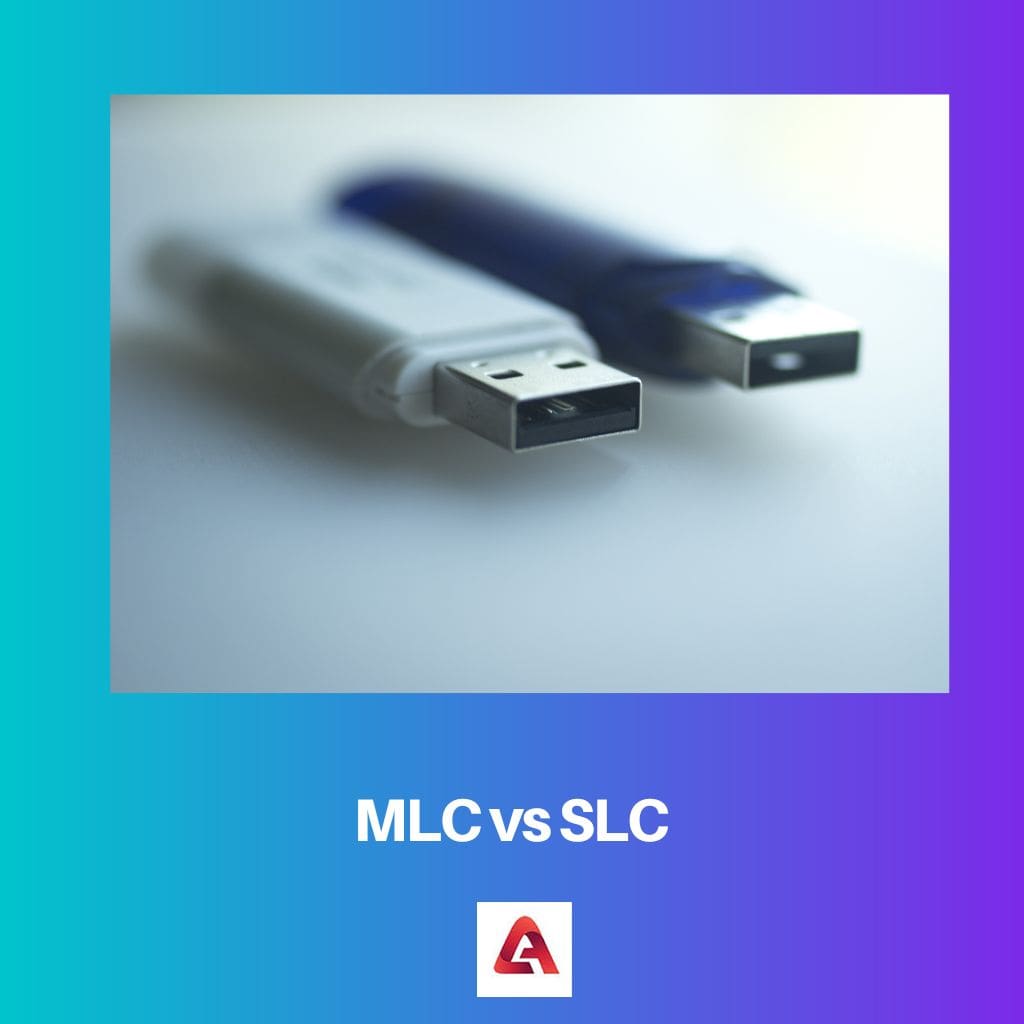Flash memory is a storage chip that can preserve data without needing an external power source. The flash memory can be of the NOR or the NAND type.
The NAND flash cell can further be classified as the SLC(Single-level cell), MLC(multi-level cell), TLC(Triple level cell), and QLC(Quad level cell).
Key Takeaways
- MLC (Multi-Level Cell) stores more than one bit of information per cell, offering higher storage capacities than SLC (Single-Level Cell) NAND flash memory.
- SLC NAND flash memory provides faster read and writes speeds, a longer lifespan, and better reliability than MLC NAND flash memory.
- MLC NAND flash memory costs less per GB and is more widely used in consumer electronics, while SLC NAND flash memory is utilized in industrial and high-end applications.
MLC vs SLC
MLC flash memory stores two or more bits of data per memory cell. This means that MLC memory can store more information in the same space as SLC memory. SLC flash memory stores one bit of data per memory cell. SLC memory can only hold a 0 or a 1 in each cell. SLC memory is faster, more reliable, and has a longer lifespan.

MLCs are commercial grade and used in USB flash drives and compact flash cards. They have a block size of 128 K bytes.
SLCs are used in embedded systems and are of industrial grade. It has a block size of 64 K bytes.
Comparison Table
| Parameters of Comparison | MLC | SLC |
|---|---|---|
| Expansion | It is known as a multi-level cell. | It can store two bits per cell. |
| Storage | The read-and-write performance is lower. | It can store one bit per cell. |
| Performance | It is costly and unsuitable for the usual market. | The operation is faster and more reliable. |
| Cost | It is not very expensive and is easily affordable. | Endurance is excellent. |
| Endurance | The endurance meets acceptable standards. | Endurance is very good. |
What is MLC?
MLC can interpret multiple ranges of values. They are 00,01,10, or 11.
The values 01 and 10 correspond to the partially programmed and partially erased conditions. At the other end of the scale, the value of 11 denotes an entirely erased state.
The MLC flash memories are available in thirty-two and sixty-four megabits per second. The former has a read speed of 120 nanoseconds, while the latter takes 150 nanoseconds.
They are capable of more write cycles than the average MLC flash. It is the optimal solution given its positive output and affordable price range compared to the SLC flash.
This is related to the write. The fewer the number of write cycles, the greater the scope of errors.
The high threshold of power consumption of an MLC flash is owed to two key reasons: the necessity for different voltage levels and the lack of technology.
What is SLC?
The bit value of the SLC flash, also known as the voltage level, is either 0 or 1. The value of 0 represents a programmed state, whereas 1 donated an erased form. A single charge is needed in every cell to read and write a data unit.
The SLC has a density of sixteen megabits per second, with a read speed of hundred nanoseconds. Since there are no fluctuations or different requirements about the voltage levels, the power consumption is significantly lesser.
SLCs are famous for their high-quality endurance. They have a long life span due to a small number(two ) of voltage levels.
The security for data logging is assured in this type of flash memory. It eliminates the risk of data loss due to uncertain external influencing factors.
Main Differences Between MLC and SLC
- The MLC is otherwise called a DLC-Double level cell. In contrast, SLC is a single-level cell.
- MLC has high-density data storage, making retrieval rates slow. In comparison, data retrieval in SLC is faster as it stores 0 or 1.
- Due to a lack of partial programming, the performance of MLC is slower. In SLC, this increases the speed of implementation and its efficiency.
- MLC targets the mainstream market and is affordable. The SLC is expensive as it caters to a specialized client category.
- On average, the MCL can give an output of 10000 P/E cycles. The performance of an SLC can meet ten times that of an MLC flash.
The discussion of endurance and performance differences between MLC and SLC is quite illuminating. It helps in understanding their distinct applications.
This is a very informative and detailed explanation of the flash memory technologies.
I find it hard to fully appreciate the complexity described here. It might be too technical for the average reader.
True, the technical details may be overwhelming for some, but it caters to those with a keen interest in the subject.
Fascinating! It’s interesting to learn about the technological differences between MLC and SLC. The comprehensive comparison table is especially useful.
Yes, it’s important to understand the technical specifications of flash memory for various applications. Great insight.
The discussion about power consumption and their impact on flash memory technology is intriguing and offers a distinctive perspective on the topic.
The comparison between MLC and SLC is presented in a clear and insightful manner, highlighting their advantages and differences effectively.